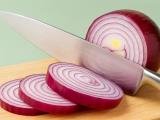What does it mean when food is addictive?
When we say a food is addictive, we don’t just mean it tastes good. We’re talking about actual biochemical dependency, similar to what tobacco, alcohol, or even certain drugs cause. Scientists have found that processed food (that is, food that is treated by industry to last longer and taste better) has the same properties as narcotics. It contains concentrated fats and refined sugars, which trigger large amounts of dopamine release in the brain—a pleasure hormone.
Dopamine acts as a natural reward: the body releases it when we do something that benefits us—like eating, being active, or falling in love. But when doses are artificially high, the brain forgets balance. And that’s exactly what processed food does: it floods neural pathways with a rapid hit of satisfaction that disappears quickly, making us chase it again.
What science says, and what else researchers found
A study conducted at the University of Michigan and published back in 2020 included 504 participants. They were asked to rate which foods make them feel unable to stop eating. Later, the survey was repeated online, and in the spring of 2025, an additional 384 people from various countries were added.
The result?
In first place was not chocolate, as you might expect, but ... Pizza!
Yes, ordinary pizza. The average addiction score was 4.01 out of 7. It was followed by chocolate (3.73), chips (3.73), cookies, and ice cream.
Interestingly, at the bottom of the list are foods that everyone knows are healthy: cucumbers, carrots, and beans. These received scores below 2.0, meaning there is virtually no addiction risk from them.
Why pizza, chips, and chocolate are like mini drugs for the brain
Processed food is made to be hard to refuse. Industrial recipes combine three key elements: sugar, fat, and salt. When eaten together, they create a strong chemical reaction in the brain, triggering a dopamine surge almost as powerful as what you get from a cigarette or alcohol.
To make it easier to imagine:
- Just one slice of pizza can release up to 150% more dopamine than a meal with the same calories made from natural ingredients (like rice with vegetables).
And worst of all, when these rewards repeat, the threshold for feeling satisfied rises. This means we have to eat more and more to get the same feeling.
That’s how a vicious cycle is created: the more we eat, the more we crave. And since these foods are cheap, accessible, and tasty, they become part of our everyday diet.
What old folk wisdom says
Even though we now trust labs and measurements, our grandparents have long known a simple truth: what’s too salty, fatty, or sweet, does not bring happiness. In the countryside, people once noticed that those who mainly ate homemade, seasonal food like potatoes, cabbage, beans, and apples didn’t have problems with overeating.
Why? Because these foods are naturally balanced—they contain fiber, minerals, and natural sugars that are released slowly.
Folk remedies like sauerkraut, homemade soup, apple cider vinegar, or even a spoon of flaxseed oil acted as what we would today call natural body detoxifiers. They helped regulate appetite and soothe the stomach when food was too heavy or there was too much of it.
What can you do yourself?
If you’re worried that pizza gets under your skin too fast, here are some tried and true tips. It’s not about dieting but about returning to balance.
- Eat at least one meal you prepare yourself every day.
Home-cooked meals have less hidden fat and sugar. A 2024 study from (Harvard School of Public Health) showed that people who cook at home at least 5 times a week consume 42% less processed fat. - Drink water before meals.
An old saying goes: first a sip of water, then a bite of bread. It’s not an empty rule. Water fills the stomach and helps regulate the hormone leptin, which tells the brain when we are full. - Add bitter flavors.
Bitters (in chicory, dandelion, wormwood, apple cider vinegar) act as a natural reset for the brain. They reduce cravings for sweet and fatty foods. Old folk healers always recommended a bitter cleanse after holidays—like a tea made from wormwood or dandelion ... - Eat slowly and consciously.
People who eat more slowly consume up to 20% fewer calories because the brain needs about 20 minutes to sense fullness. - Getting enough sleep is important!
Lack of sleep increases the hunger hormone (ghrelin) by 28% and decreases the satiety hormone (leptin) by 18%, which means you’ll crave salty and fatty food the next day.
What happens when you reduce processed food
Results are quickly visible and backed by research:
- After 7 days of less processed food, craving is reduced by almost 50%.
- After 3 weeks, energy levels and sleep improve.
- After 8 weeks (proven in a 2022 study on 300 participants), the average body mass index (BMI) drops by 1.3 points without a special diet.
- People in the study who swapped pizza and chips for a home-cooked meal (e.g., boiled potatoes, vegetables, and proteins) reported after two months:
- less anxiety (–30%),
- more energy (+25%),
- and better sleep (+35%).
- less anxiety (–30%),
It was once believed that overeating was a matter of willpower. Today we know it’s a chemical reaction in the body. When we eat food rich in sugar and fat, the body releases insulin to balance blood sugar. But if this happens too often, the body gets used to insulin and so-called insulin resistance develops. This leads to energy slumps, fatigue, and even stronger food cravings.
That’s how the cycle is completed: food – dopamine – brief satisfaction – energy crash – renewed food craving.
Old solutions that still work
People have always known how to regulate appetite with natural remedies.
- Sour milk or kefir helped calm the stomach after a heavy meal.
- Warm soup made from roots (parsley, celery, turnip) acted as a cleanser.
- Tea from fennel or caraway helped when the stomach wanted more than it could handle.
- A spoon of apple cider vinegar in water before a meal lowers blood sugar by 10 to 20%, as confirmed by a 2021 study from Tokyo.
All these are methods people have known for centuries, and now science confirms they work.
How to recognize if food has you in its grip
Even though official medicine doesn’t yet have a diagnosis for food addiction, there are signs that indicate it. If you recognize yourself in more than three of the following examples, then it might be time to cut down on processed food:
- you often say just one more slice, but eat the whole bag;
- you feel guilt or fatigue after eating;
- you turn to food in times of stress, even if you’re not hungry;
- you can’t stop eating certain foods, even when you know they’re not good for you.
The path back to real food
Even though we live in a time where we can order anything in just a few minutes, it’s worth remembering one simple rule: food without a label is almost always a good choice.
Natural, simple foods (an apple, boiled potatoes, soup, nuts) won’t get us addicted, because they nourish us—they don’t lure us.









 Would you like to be informed about news on the website?
Would you like to be informed about news on the website?

